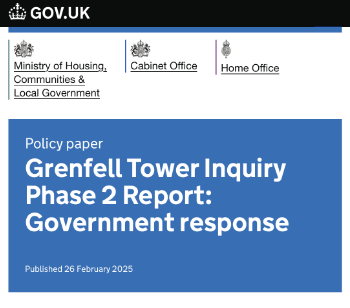Work order management system
Work order management systems use a dashboard-based software approach to track and manage relevant maintenance projects and processes for facilities management departments. Work orders are typically related to the upkeep of equipment and can incorporate both simple and complex tasks such as changing an air filter or replacing an entire HVAC (heating ventilation and air conditioning) system.
Work order management systems are suitable for multi-site organisations and can be integrated with enterprise asset management (EAM) software or computerised maintenance management systems (CMMS). EAM and CMMS are different types of work order management systems.
Contents |
[edit] Characteristics
Work order management systems document basic processes - create work orders, request updates, track task completions - which are then broken down into smaller tasks. These systems can be tailored to incorporate requirements necessary for auditing purposes, regulatory requirements or other business-specific concerns.
Some systems are also able to monitor additional tasks associated with maintenance work orders:
- Prioritise requests (emergency request or planned repair).
- Provide details of the task, including safety requirements and special tools needed for the job.
- Gather job costing and billing information.
- Track time for task completion (including projected downtime).
- Summarise tasks by trade or job type.
- Create summaries for managers based on department requests.
- Monitor supplies, costs and warranties (including inventory management).
- Generate preventive maintenance schedules.
With a computerised work order management approach to maintenance, work orders are created in real time. They are then assigned and sent directly to the appropriate tradesperson to complete based on the information provided. It is possible to order replacement parts simultaneously with the creation of the work order.
[edit] Generation of work orders
Work orders are typically generated when an internal request is made, but they can also come about after a general facility inspection or safety audit. Property inspections may reveal maintenance issues with electrical systems, roofing or other site features. Safety audits can trigger repairs for signage, lighting, waste management and other hazardous situations.
Preventive maintenance tasks can also be a source of work orders, particularly when they identify the need to replace parts, materials or supplies.
[edit] Reporting capabilities
Work order management systems track the progress of maintenance tasks. They can also trigger alerts if problems occur or if a task has not been initiated.
Once the task is complete, the system can generate reports for data mining. This analysis can be used for assessing budgets and resource availability and for other planning purposes.
[edit] Related articles on Designing Buildings Wiki
Featured articles and news
CIOB student competitive construction challenge Ireland
Inspiring a new wave of Irish construction professionals.
Challenges of the net zero transition in Scotland
Skills shortage and ageing workforce hampering Scottish transition to net zero.
Private rental sector, living standards and fuel poverty
Report from the NRH in partnership with Impact on Urban Health.
.Cold chain condensing units market update
Tracking the evolution of commercial refrigeration unit markets.
Attending a conservation training course, personal account
The benefits of further learning for professsionals.
Restoring Alexander Pope's grotto
The only surviving part of his villa in Twickenham.
International Women's Day 8 March, 2025
Accelerating Action for For ALL Women and Girls: Rights. Equality. Empowerment.
Lack of construction careers advice threatens housing targets
CIOB warning on Government plans to accelerate housebuilding and development.
Shelter from the storm in Ukraine
Ukraine’s architects paving the path to recovery.
BSRIA market intelligence division key appointment
Lisa Wiltshire to lead rapidly growing Market Intelligence division.
A blueprint for construction’s sustainability efforts
Practical steps to achieve the United Nations Sustainable Development Goals.
Timber in Construction Roadmap
Ambitious plans from the Government to increase the use of timber in construction.
ECA digital series unveils road to net-zero.
Retrofit and Decarbonisation framework N9 launched
Aligned with LHCPG social value strategy and the Gold Standard.
Competence framework for sustainability
In the built environment launched by CIC and the Edge.
Institute of Roofing members welcomed into CIOB
IoR members transition to CIOB membership based on individual expertise and qualifications.
Join the Building Safety Linkedin group to stay up-to-date and join the debate.
Government responds to the final Grenfell Inquiry report
A with a brief summary with reactions to their response.

























